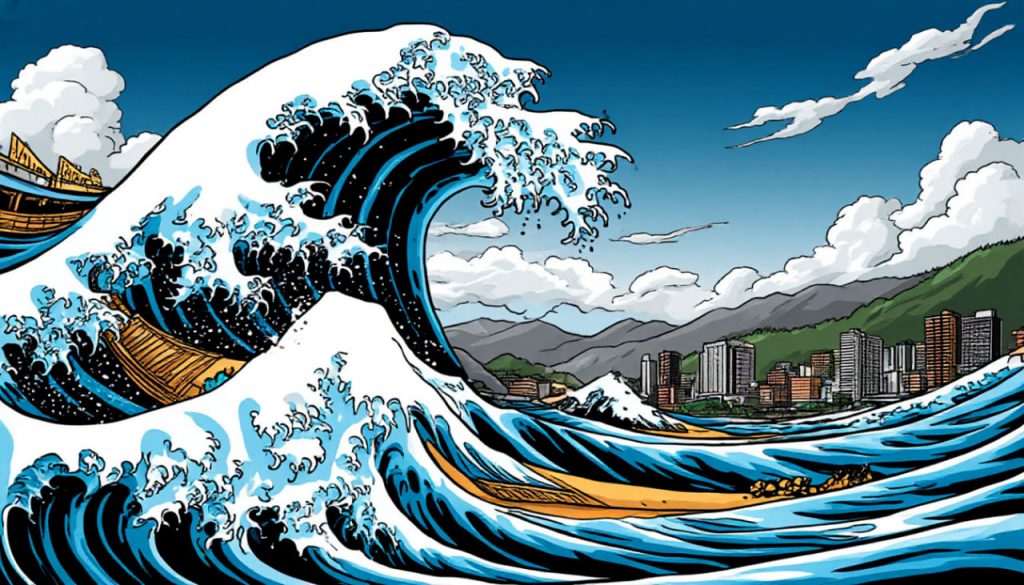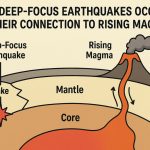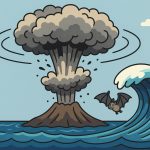A super tsunami is a rare and catastrophic type of tsunami, much larger and more destructive than typical ones. While ordinary tsunamis are usually caused by underwater earthquakes or landslides, super tsunamis are triggered by extreme geological events that displace enormous volumes of water. Their waves can reach hundreds of meters in height and travel thousands of kilometers across oceans.
Causes of Super Tsunamis
The most common sources of super tsunamis include:
- Massive volcanic eruptions, such as the collapse of volcanic islands into the sea.
- Asteroid impacts, which can displace huge amounts of ocean water in seconds.
- Gigantic landslides under the ocean or from coastal cliffs.
- Submarine volcanic activity, where sudden collapses or explosions disturb the seafloor.
Unlike regular tsunamis, which are generally less than 30 meters high, super tsunamis can exceed 100–200 meters near their source.
Historical Evidence
Evidence of ancient super tsunamis exists in geological records:
- Around 66 million years ago, the Chicxulub asteroid impact likely created waves over 1,500 meters high in the Gulf of Mexico.
- The Storegga Slide off the coast of Norway about 8,000 years ago triggered massive waves across the North Atlantic.
- Volcanic collapses, such as those in the Canary Islands, have been linked to past megatsunami deposits.
Effects on Coastal Regions
A super tsunami would devastate coastal areas. Its immense height and energy would destroy infrastructure, flood vast regions, and reshape coastlines. Entire cities could be submerged within minutes. Unlike ordinary tsunamis, super tsunamis could reach far inland, leaving long-lasting damage to human settlements and ecosystems.
Global Consequences
If caused by an asteroid impact or massive volcanic collapse, a super tsunami could affect entire ocean basins. Shipping routes, global trade, and millions of coastal inhabitants would face catastrophic risks. Saltwater intrusion could ruin farmland, and marine ecosystems could be severely disrupted for decades.
Scientific Monitoring and Prevention
Modern scientists use seismographs, ocean buoys, and satellite monitoring to detect tsunami-generating events. However, predicting super tsunamis is challenging due to their rarity. Research into potential high-risk zones, such as volcanic islands and unstable submarine slopes, is ongoing. Global cooperation in monitoring and disaster preparedness is essential.
Conclusion
Super tsunamis are among the most devastating natural disasters imaginable, though they occur very rarely. Studying their causes and past events helps scientists prepare for potential future risks. While we cannot prevent them, improved monitoring and global readiness can reduce their impact on humanity.
Glossary
- Tsunami – a series of large waves caused by sudden displacement of water.
- Super tsunami – an exceptionally large tsunami caused by extreme geological events.
- Asteroid impact – collision of a space object with Earth, displacing water and rock.
- Landslide – mass movement of soil, rock, or sediment down a slope.
- Megatsunami – another term often used for super tsunami, describing waves hundreds of meters high.
- Saltwater intrusion – movement of seawater into freshwater regions, making them unsuitable for farming.


